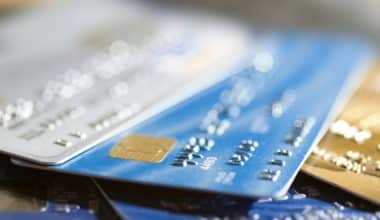There are multiple options for prospective home buyers to acquire their initial property through a mortgage with a low down payment. Mortgage applicants have the option to qualify for loans with a 3 percent down payment, and there are also low down payment mortgage alternatives that require no initial payment. Typically, initial home purchasers reserve a median of 7% for a down payment, although it is not mandatory. Read on to learn about the best low-down payment mortgage loan and how to get them.
What Is a Low-Down-Payment Mortgage?
A low-down-payment mortgage refers to a type of home loan that necessitates a payment of less than 20% of the purchase price of your home at the outset. According to Julienne Joseph, the Senior Advisor for Homeownership at the Office of the HUD Secretary, a significant number of borrowers with limited financial resources are drawn to these mortgages due to the opportunity to reserve their remaining assets for unforeseen expenses and extras.
How to Get Low Down Payment Mortgage
To get a low down payment mortgage, you have to do the following:
#1. Determine Your Eligibility for a Mortgage Option With No Down Payment
The Bank of America zero-down program aims to make buying a home easier in minority neighborhoods. Also, USDA and VA loans offer the opportunity to secure a mortgage without requiring a down payment. Hence, to be eligible, specific criteria pertaining to the property’s location, income level, and military service of either yourself or your spouse must be met.
#2. Examine Mortgage Alternatives That Require a Minimal Initial Payment
Individuals who can provide a down payment of less than 20 percent have the option of choosing between conventional mortgages and authority-backed mortgages.
#3. Solicit Assistance From Family Members or Acquaintances
Several lending institutions offer the option of utilizing gift funds from a family member, and in certain instances, a trusted friend, labor organization, or employer, towards the down payment. It is also required that you furnish a letter from the donor indicating that the gifted amount is non-repayable.
Low Down Payment Mortgage Options
If you do not meet the criteria for a no-down payment home loan, fear not! You may still have the opportunity to purchase a home with the next best low-down payment mortgage options. Thus, they include the following:
#1. The FHA Loan
This is one of the low down payment mortgage options that you can secure your dream home with just a small down payment of 3.5%. A minimum FICO score of 580 is required to avail yourself of the opportunity of a 3.5% down payment. So, if your credit score falls between 500 and 579, you’ll need to put down a 10% down payment to secure your dream home.
Hence, to keep your financial balance in check, it’s best to ensure that your debt-to-income ratio doesn’t exceed 50%. Bear in mind that the prerequisites for FHA loans may fluctuate depending on the lender you choose.
#2. The Good Neighbor Next Door
The “Good Neighbor Next Door” (GNND) initiative is a special opportunity designed for those who dedicate their lives to serving the community. This program is exclusively available to professionals in public service roles such as teachers, emergency personnel, law enforcement officers, and ambulance technicians, who are looking to purchase a home in a qualifying area.
Hence, with the generous support of the U.S. Department of Housing and Urban Development (HUD), aspiring homeowners can now enjoy a whopping 50% discount on their dream abode! And the best part? You can secure your new home with just a $100 down payment. The program requires the borrower to meet the eligibility criteria for a primary mortgage, and the reduced portion of the abode is granted through an additional loan. So long as the borrower stays on track with the program’s prerequisites, the second mortgage will remain a debt-free delight.
#3. HomeReady Mortgage
This is also one of the low down payment mortgage options that are available from numerous mortgage lenders. However, with a HomeReady loan, you can make your dream of owning a home a reality with just a 3 percent down payment. Plus, the loan’s underwriting is flexible, making the process smoother and less stressful. Although mortgage insurance is required to account for the minimum down payment, it typically comes at a more affordable cost compared to a traditional loan.
#4. Conventional 97 Mortgage
This is one of the low down payment mortgage options that is backed by the GSEs, Fannie Mae, and Freddie Mac. It also offers a remarkable opportunity to homebuyers with a mere 3 percent down payment requirement. Keep in mind that traditional mortgages demand a minimum credit score of 620, which is relatively high.
Similar to other programs that require a smaller down payment, it’s important to have your finances in order to cover the cost of mortgage insurance on a monthly basis.
#5. Home Possible mortgage
Home Possible is a Freddie Mac-backed mortgage scheme that is comparable to HomeReady. It requires a 3 percent down payment. Mortgage insurance is indeed a requirement for borrowers, but fear not, as it comes with the added benefit of lower rates. Also, borrowers can still enjoy the same credit flexibility.
Best Low Down Payment Mortgage Loan
The best low down payment mortgage loan include the following:
Navy Federal Credit Union offers a comprehensive range of benefits to active or retired Armed Forces personnel who have enrolled for a Navy Federal Credit Union membership, with eligibility extending to their immediate relatives. The lending institution provides VA loans that allow for a zero percent down payment and permit the borrower to contribute up to four percent of the property’s value towards closing expenses.
Furthermore, an alternative mortgage option, known as the Military Choice mortgage, shares comparable criteria with the VA loan, including exemption from PMI and a minimal 0% down payment. However, it permits sellers to make a contribution of up to 6% of the property’s value towards closing expenses.
#2. PNC Bank
The USDA loan program enables prospective homebuyers to acquire a property without making any down payments. Locating lenders that provide USDA loans alongside other conventional mortgage options can be challenging. However, PNC Bank offers USDA loans as part of its product offerings.
Hence, to be eligible for a USDA loan through PNC Bank, it is necessary to purchase a property in a qualifying rural location. In addition to USDA loans, this lender provides a range of other financing options, including standard loans, FHA mortgages, VA loans, large loans, and the PNC Bank Community Loan. This specialized program enables homebuyers to select between fixed-rates and configurable-rate mortgage terms and make a down payment as low as 3% without incurring private mortgage insurance.
Additionally, this lending institution provides a distinct loan alternative specifically tailored to individuals in the medical field seeking to purchase a primary residence exclusively. Medical Professionals are eligible to apply for a loan of up to $1 million without the obligation of paying private mortgage insurance, irrespective of their down payment amount. The users have the option to select from either fixed-rate or tunable-rate terms.
#3. Chase Bank
Chase Bank provides a down payment alternative as low as 3% through the DreamMaker home loan. Hence, to put it in perspective, an FHA loan requires borrowers to make a 3.5% deposit. The DreamMaker loan is tailored to cater to individuals with limited financial capacity to make a substantial down payment.
However, it is noteworthy that this loan option has more stringent income prerequisites compared to other loan alternatives. As per Chase’s guidelines, the maximum annual income eligible for customer qualification should not exceed 80% of the area median income (AMI).
#4. Ally Bank
Ally Bank has a fantastic HomeReady mortgage system that caters to low- to mid-income homeowners, irrespective of whether they’re new or repeat buyers. Hence, with this program, you can lay down as little as 3% for a down payment, making it easier to achieve your dream of owning a home.
In addition, to be considered for the opportunity, potential candidates must adhere to a few guidelines. Firstly, their debt-to-income ratio should not exceed 50%. Also, their income must be at or below 80% of the median income of the surrounding area. Lastly, at least one of the borrowers must complete a property owner education course.
As you embark on your journey to homeownership, be prepared to encounter a series of fees from your lender. These may include a deposit, a formation fee, a processing fee, and an evaluation fee. While these charges may seem daunting, it’s important to keep in mind that they are a standard part of the mortgage application process and can add up quickly. Although Ally doesn’t impose any of those pesky fees, you may still encounter evaluation and recording fees or be responsible for covering the costs of title searches and insurance policies.
#5. PMI
PMI, also known as private mortgage insurance, is a customary monthly expense that you’ll incur if your down payment for your home is less than 20%. Though you can eventually eliminate PMI after building up 20% equity in your home. However, it can still nibble away at your monthly budget until that point and be a pesky little creature.
Is 5% Down Enough for a Mortgage?
Absolutely! A borrower who meets the necessary qualifications can indeed secure a mortgage loan with just a 5% down payment. In this day and age, that should suffice to appease the majority of mortgage lenders. Unfortunately, if your down payment is 5% or less, you’ll probably have to shell out some cash for personal mortgage insurance.
What Is the Minimum Down Payment on a $250,000 House?
Frequently, the initial payment made towards a residential property is denoted as a proportion of the total cost. For instance, in the case of residential property worth $250,000, a down payment of 3.5% would amount to $8,750, whereas a down payment of 20% would be $50,000.
What Is the Minimum Down Payment for a $400,000 House?
To make a 10 percent down payment on a $400,000 house, borrowers are required to have $55,600 in available funds. For a 30-year mortgage, it is recommended that your monthly income be no less than $8200 and that your monthly payments toward any current debts do not surpass $981.
How Much Do You Need to Make a Year for a $300,000 House?
To acquire a residence valued at $300,000, it may be necessary to have an annual income ranging from $50,000 to $74,500. The aforementioned is a general guideline, and the precise remuneration will be contingent on factors such as your credit rating, the ratio of debt to earnings, the type of mortgage, loan duration, and mortgage interest rate.
How Much Is a Downpayment on a $200,000 House?
Typically, traditional mortgages, such as the 30-year fixed rate mortgage, necessitate a minimum of a 5% down payment. In the scenario where the home purchase price is $200,000, a down payment of $10,000 will be required to obtain a home loan.
Can You Borrow Money for a Down Payment?
Yes, you can. There are several viable options available to you, such as obtaining a home equity loan or a home equity line of credit (HELOC) or seeking a private loan from a trusted friend or family member.
How Can I Avoid PMI With 5% Down?
To avoid PMI payments of 5%, a viable option is to provide a down payment that amounts to a minimum of 20% of the home’s purchase price. Thus, this results in an 80% loan-to-value (LTV) proportion as per mortgage terminology.
Over and Out
Acquiring a residential property with a minimal initial payment is readily attainable through appropriate financing options. Low down payment options include conventional, FHA, VA, and USDA loans. Additionally, homebuyers can provide down payment assistance to assist with the coverage of the down payment on FHA loans. It is also important to note that obtaining pre-approval is a necessary step before securing a mortgage.
References
- homebuyer.com
- money.usnews.com
- forbes.com
- bankrate.com
Related Articles
- How To Avoid PMI (Private Mortgage Insurance): Detailed Guide
- 80-10-10 Loan: Everything You Should Know!!!
- How To Buy A House With Bad Credit: Detailed Guide In 2023
- No Down Payment Mortgage: Getting a Mortgage With No Down Payment In 2023
- Secondary Mortgage Market: Step By Step Guide On How It Works
- BEST US BANK TO BANK WITH 2023: Complete Guide






